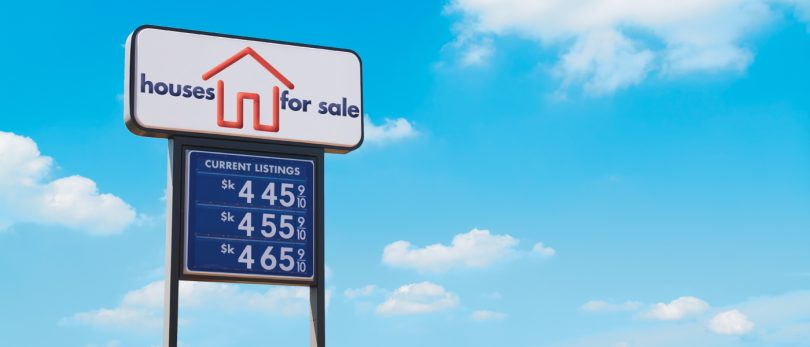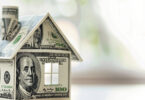In the internet age, search parameters dictate how agents list homes.
By Megan Craig
To end on the 9 or to round up to 0: It’s a conundrum for REALTORS® trying to perfectly price a home for a quick but high-price sale.
Charm pricing, or pricing just below a round number (think: $9.99 or $399,900), is one of the most popular ways to price anything, real estate included. And some research backs up the idea that this pricing strategy is the most effective at piquing buyers’ interest.
In their study, “The Effects of Charm Listing Prices on House Transaction Prices,” researchers Marcus T. Allen and William H. Dare found that sellers of lower-priced houses XS (below $300,000) sold their homes for significantly more money when using charm pricing than sellers of similar houses who listed with a round-number price. They also found that higher-priced homes (between $300,000 and $1 million) benefited from listing prices ending in $5,000 or $9,000, rather than a number that has been rounded to the nearest $10,000.
Another study by two New York University researchers found that charm pricing works because of a psychological phenomenon known as “the left-digit effect,” which means prices ending in “9” are perceived as significantly smaller numbers than their rounded counterparts, as long as the number on the far left is smaller than the rounded number. (For example, $2.99 is perceived as close to $2, even though it’s only one cent from $3.)
By contrast, other studies have shown that “prestige pricing” can also work because rounded numbers are more easily processed in the brain, and therefore they may feel right.
But for many agents, the huge advantage to listing a home price at a round number has little to do with psychology and more to do with searchability.
Pricing with Special Charm
For some REALTORS®, neither traditional charm pricing nor rounding to the nearest quartile does the trick. Instead, these agents play by their own charm-pricing rules.
Take, for example, Julian Coiner, CRS, broker/owner with Agent 007 Real Estate in Kauai, Hawaii. As the self-styled “agent 007” of real estate, Coiner lists his clients’ properties with obvious flair.
“I’ve always priced all my properties ending in ‘007,’ and when I write offers, it’s the same thing with ‘007’ at the end,” he says. “If I’m listing a property at $950,000, it’s $949,007.”
Coiner uses it as a marketing strategy. When people look through MLS or on Zillow, they notice that “007.” He says he gets many calls from potential buyers and sellers who were simply intrigued by his unique prices.
“Sociology was one of my favorite classes in college,” he says. “I’m interested in the way people perceive things, and I’ve always been intrigued by doing things a little differently.”
For Michelle Warren, CRS, of Harry Norman Realtors in Peachtree City, Georgia, pricing can be used as a lucky charm—she always tries to put an “8” in her prices to ensure the good energy attached to that number in feng shui.
She’s also had some luck with home prices containing “49,” a number associated with the Jewish Year of Jubilee.
Pricing so the individual numbers in the price add up to 18 has worked for Tama Traberman, CRS, of Michael Saunders & Company in Sarasota, Florida. In Hebrew, “chai,” which means “life,” is associated with the number 18.
“Does this make sense to anyone but me and my customers? No. But something must be at work here,” Traberman says. “My listings don’t expire … they sell.”
Tailoring Prices in the Digital Age
Charm pricing may yield higher transaction prices, but many REALTORS® believe strongly that the strategy no longer works for one very specific reason: the internet.
A joint report by the National Association of REALTORS® and Google found that at least 90 percent of buyers searched online at some point during the home-buying process. That means buyers and buyer agents often are getting their first glimpse of a home via the online MLS or through popular sites like Trulia, Redfin and Zillow.
For that reason alone, Jackie Leavenworth, CRS, a REALTOR® trainer and coach, stays away from charm pricing.
“We’re not operating a gas station or a dress shop. Pricing on the $999 or $967 or whatever to catch attention doesn’t make a difference,” she says. “It’s a price war out there, and that war begins on the internet.”
Many sites offer dropdown boxes with range options provided for various quartiles; for example, a buyer could search for listings from $200,000–$225,000, $225,000–$250,000, $250,000–$275,000 and so on, Leavenworth says.
And even though some sites enable a buyer to select any price range to use in a search without using a dropdown menu that has default price ranges, most users still use round numbers in their searches.
Ira Serkes, CRS, an agent with Pacific Union International Real Estate in the San Francisco Bay area, says he knew he had to price with round numbers once he started seeing potential buyers searching on sites like Zillow.
“I guarantee you that on those sites or on the MLS, you’re never going to be able to search by a ‘999’ increment option. So, once the internet came in, how people searched changed,” Serkes says.
Bridging the Gap
When an agent lists at a number slightly below a round number, he or she loses the next tier of buyers, Leavenworth says, significantly reducing the property’s exposure. And those buyers—the ones searching in the next-highest price bracket—may see the home as more of a bargain.
“We weren’t fooling anyone by pricing it on the $499 anyway,” says Jean Groesbeck, CRS, with Coldwell Banker Bain in northwest Washington. “Marketing is exposing the most people to the property, and pricing at a round number such as $500,000 exposes the property to many more buyers.”
Groesbeck says she sees more sophistication from buyers now, including those who come to town with a spreadsheet of statistics and perceived pros and cons on each property they want to see. The most important thing now, she says, is to be on that spreadsheet of the list of homes buyers want to see, which is best accomplished by exposing the property to more buyers online through rounded pricing—that will be seen by buyers on both the lower and higher sides of the price.
“There’s not a seller in the world who will be upset if you raise their price to double their exposure on the internet,” Leavenworth says.
Combining Tactics
Despite the advantages of such exposure, most agents won’t overprice nor underprice a house by several thousand dollars just to get more eyes on it, says Christi Conroy, CRS, an associate broker with Berkshire Hathaway HomeServices Towne Realty in Virginia Beach, Virginia.
Appraisals and the actual market value of the home have to be considered as well.
That’s when a REALTOR® may be able to reap the benefits of charm pricing, Conroy says, when the price falls somewhere well between commonly searched amounts.
“Charm pricing is a great idea if you’re somewhere in the middle, say $310,000. In the median price range in my area, $10,000 is too much of a difference to take it down to $300,000 or up to $325,000,” she says. “Maybe that’s when it works” to use the charm price of $309,900.
Kim Peterson, CRS, of Realty Executives Integrity in the far northern suburbs of Milwaukee, says she prices both in round numbers and using charm prices, depending on the price break.
“If it’s a bigger price break ($100,000 or $25,000), I am always using the round number now to get both ends of the search engine lookup. If it’s a $10,000 price break, I often also use the round number,” she says. “If it’s a $5,000 price break, then I will usually use the (charm price).”
That way, she says, she takes advantage of the best of both pricing strategies. 
Rounding It Out
Although some studies have shown that charm pricing works to sell homes for more money, many agents price on round numbers because those prices are more internet-searchable. For example:
An agent lists a house at $199,900.
A buyer searches for homes from $150,000–$200,000, just in his or her price range. This agent’s listing is at the very top of that buyer’s price range, surrounded in this search by lower-priced homes.
Another buyer searches for homes from $200,000–$250,000. That buyer won’t see the listing, because $199,900 falls under that searcher’s price parameters.
An agent lists that same house at $200,000.
A buyer searches for homes from $150,000–$200,000. That buyer will see that listing, because it’s within the $200,000 parameter.
Another buyer searches for homes from $200,000–$250,000. That buyer ALSO will see this listing, but instead of being the top of that searcher’s price point, this home will seem very economical.
Even though this agent listed the property for $100 more, the property will be exposed to more potential buyers, including those with higher price brackets.
You can take the classroom course “Listing Strategies for the Residential Specialist” throughout the year. For the current schedule of courses, click here.








